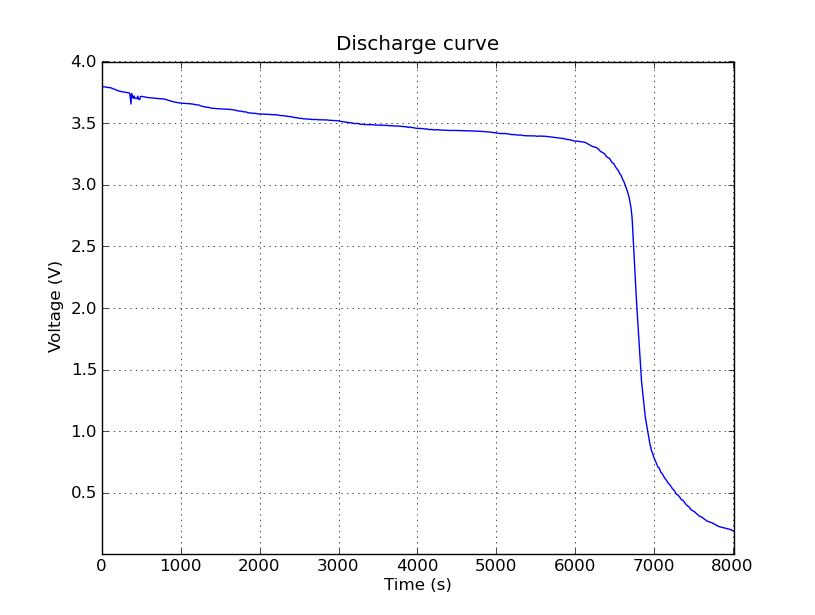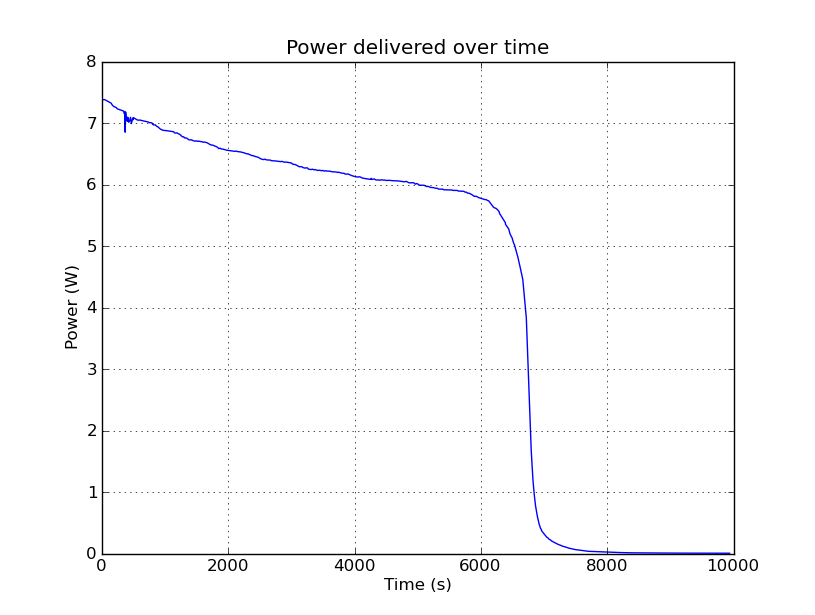I’ve had an enjoyable time today exercising a new Lithium Polymer (LiPo) battery for a client. The enjoyable part was how well the tools came together and how little effort was involved in the end.
The battery is a single cell 3.7 V with a 3500 mAh capacity. I charged it at 1 A using a Celectra EFLC3000 peak detect charger and then discharged it through a simple 1.95 Ohm resistive load. LiPo batteries have a very flat discharge curve so I’d expect to see a constant supply of power.
Power is V^2 / R so the load should be sinking about 6.6 W. It’s surprising how hot things get even at such a low power.
The data was captured using a Syscomp CGR-101 PC based oscilloscope. The scope software has a special data recorder mode that records the current screen worth of data off to a CSV file every ‘n’ seconds. A quick Python script gathered the files, converted the timestamps, and calcuated the mean of each file. A quick matplotlib script then turned this into a nice looking graph:
A bit more scripting gives the instantaneous power:
Rectangular integration shows that the battery delivered 42703 J or 11.9 Wh. It’s rated at 3500 [email protected] V or 13.0 Wh. Similar and probably within the limits of the experiment.
I’m worried about the load though. Resistance increases with temperature and the load gets quite hot. I measured 2.5 Ohms shortly after starting the second run which suggests the actual capacity is more like 9.6 Wh. I may also have been discharging the battery too fast as the effective capacity drops off with discharge rate.


